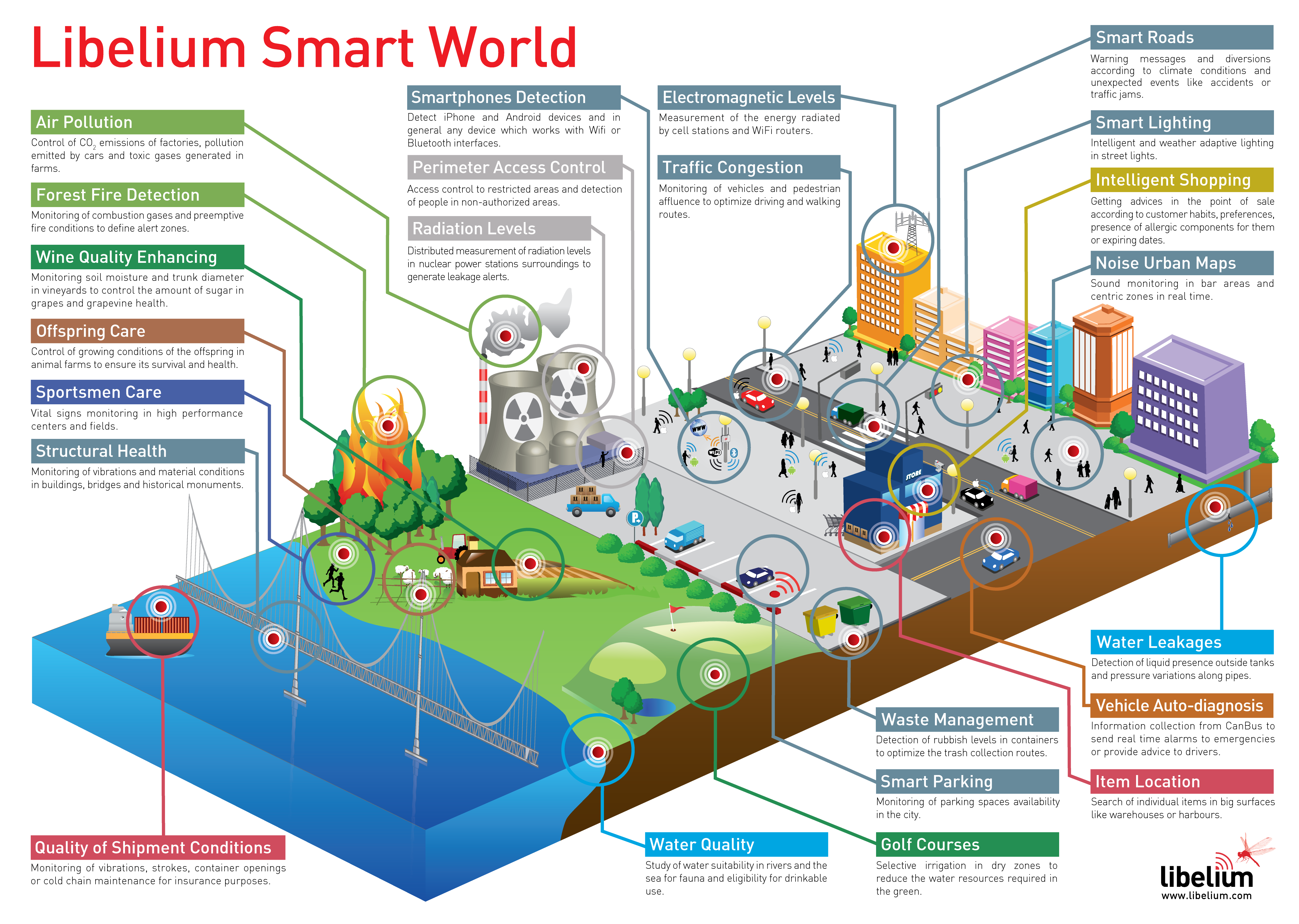My House Is Smarter Than Yours

On an average day, you might wake up and prepare for the day ahead. Exiting your home, you’re greeted by a car, door open, waiting to whisk you off to work. As you make your journey, the car never hits a red light and all of the billboards and advertisements you see really catch your eye, showcasing the season’s new fashion line you’ve been eyeing at home or the fetching new gadget you tweeted about wanting. You exit the vehicle, not worrying about the tip, and go about living yet another day in a smart city.
This Jetsons-like scenario isn’t so far-fetched as it sounds, because many technologists and thought leaders are pursuing deeper levels of technological integration in our lives and turning urban centers into living, breathing machines of efficiency and connectedness. The phrase “smart city” rings somewhat vague, but typically refers to the deployment of information and communication technologies (ICTs) to serve as infrastructure for a city, optimizing its functionalities and increasing connectedness in real time. Capturing data, processing and analyzing it, and implementing actions based on that data are cornerstones of the smart city concept, that a city and its services mold and adapt to the citizens and their wants and needs.
Building a smart city doesn’t always involve technology, but it almost always involves data. Santa Cruz, California, focuses on reducing its crime problems and improving the allocation of police resources through the retention and analysis of historic crime data. Medellín, Colombia, chose to connect its poorest, downhill neighborhoods with the uphill CBD via cable cars, which saw a decrease in crime and poverty. The key to a smart city is utilizing the citizens’ input and feedback for making policy and enacting decisions.
Naturally, though, the technology aspect is very exciting and we can see plans for deploying smart city tech being drawn up and realized all over the world. Solutions for energy, waste management, traffic and transportation, buildings, and infrastructure abound, with innovation being the order of the day. Covering urban centers with wireless connectivity and embedding sensors to a ubiquitous degree foster the vision of learning everything you need to know to thrive from the palm of your hand, from your smartphone: where the next available parking space is, when to leave to catch the bus, how to find the best happy hour deals. (Oh, wait, we already have that last one. Thanks, Yelp!)
Barcelona has an expansive smart city program, coordinating traffic, monitoring parking spaces, and a comprehensive platform for analyzing and simulating behavior. Kansas City is excitedly pursuing the smart city ideal with apps, sensors, and its cozy relationship with Google Fiber. Indian Prime Minister Narendra Modi has called for a conglomeration of minds to develop solutions for managing solid waste, converting waste into building material and energy, and recycling wastewater for the future of the Indian people. A few months ago, the Obama administration announced an initiative to invest $160 million in researching technologies and leveraging partnerships to help communities solve problems. South Korea is currently building a smart city from the ground up at Songdo (just 65km southwest of Seoul), which features large green spaces and eliminates the need for traditional trash collection methods.
Smart cities, as you can imagine, have many implications for democracy and the concept can be quite double-edged. Taking full advantage of living in a smart city necessarily requires a smartphone, which has the potential to alienate the poorest urban residents from accessing even some of the most basic city services. Privacy advocates will also find many concerns to raise with smart cities. Systems that rely on identifying citizens could be illicitly accessed to track location, movement, transactions, and so on, especially if they record such data to customize the citizens’ experiences. Governments don’t have the best track record when it comes to cybersecurity or mass data collection, so smart cities will need to cross and dot all of the appropriate letters to protect citizens and prevent abuse of such a far-reaching system. Additionally, mankind still hasn’t written perfectly functioning software and that .001% chance of failure in a smart city could render some disastrous, possibly fatal, consequences.
On the sunnier side of the coin, smart cities can be a fantastic catalyst for civic participation. Many efforts now simply reap complaints or bird’s-eye data and make decisions from there. However, if citizens provide more data through a structured funnel, political change can achieved with less pain and sweat. A key example would be Cycle Atlanta, an app that tracks the routes of cyclists in the city and reports the aggregate data to the city council. The city council potentially has access to much more verifiable information for building bike paths than it would gain from a public works session. When citizens opt into a process like Cycle Atlanta, they’re expressing their opinions to and sharing their stories with their local government, creating a civic feedback loop through normative data-sharing.
Filled with boundless possibility and excitement, smart cities are dominating the way of the future, like it or not, and they have huge implications for the future of urban democracy. Privacy, service delivery, and citizen participation are only a few of the factors of democracy to be affected by this trend, so this phenomenon merits close and wide-ranging study in application.
